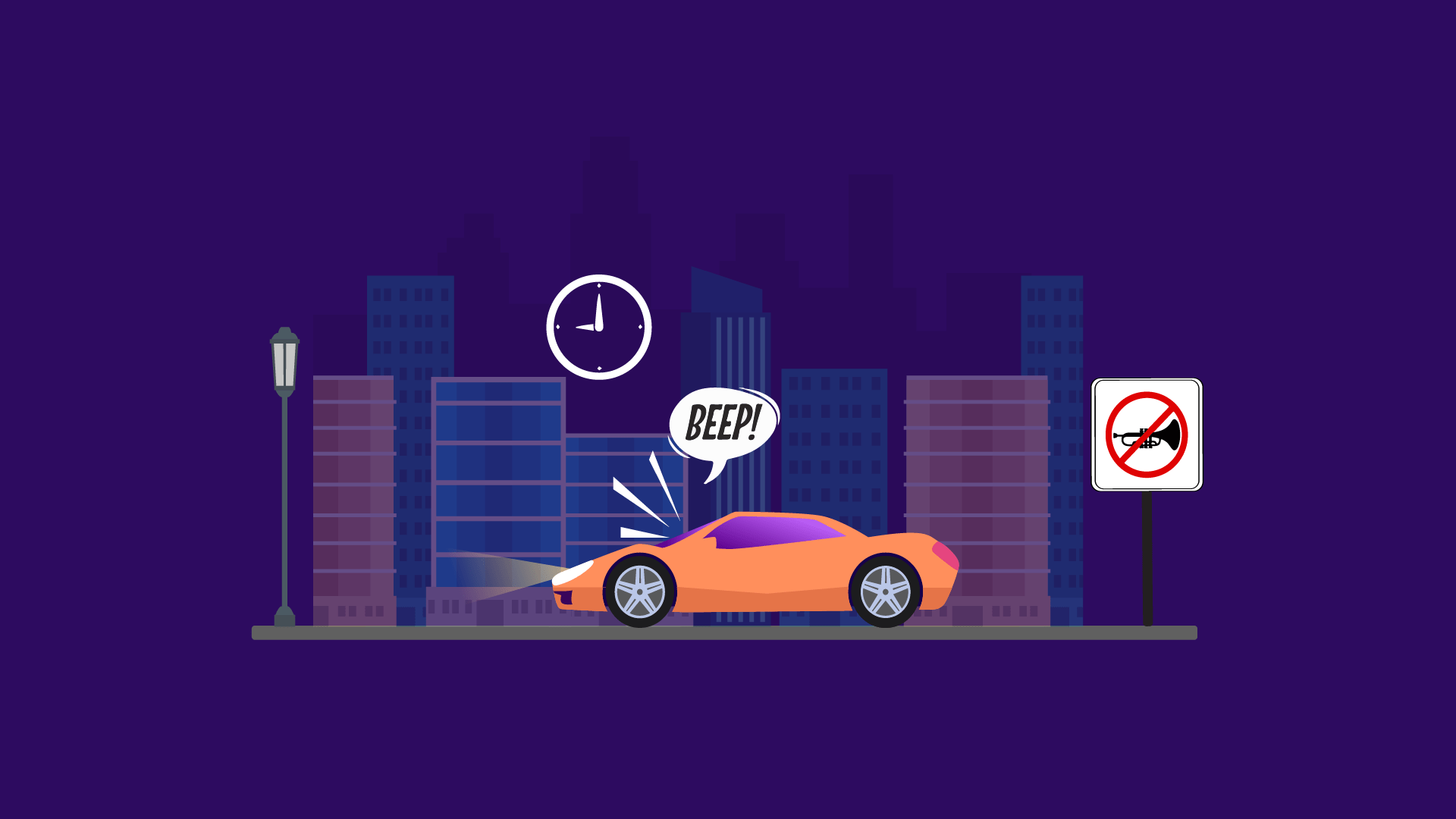When are you allowed to sound your horn in a built-up area?
By law you must not sound your horn in a built-up area between 11.30 pm and 7.00 am except in emergencies. The exception to this is when another road user poses a danger.

Contents
- When Are You Allowed To Sound Your Horn In A Built-Up Area?
- When Should You Not Use Your Horn In A Built-Up Area?
- That's A Wrap!
- FAQ
Imagine cruising through the busy streets of a crowded neighborhood, where the sounds of car engines and the buzz of daily activity surround you. In this lively scene, your car horn transforms into a powerful instrument, playing a part in the symphony of communication on the road. However, understanding when to let it make noise and when to keep it hushed is crucial for smooth and peaceful driving. Let's explore the guidelines, when are you allowed to sound your horn in a built-up area and when should you not use your horn in a built-up area?
When Are You Allowed To Sound Your Horn In A Built-Up Area?
In the hustle of built-up areas, your car horn can be a little language, but it's crucial to toot responsibly. Here’s when you're given the green light:
1. Traffic Alert: You can give your horn a gentle tap to alert others about traffic. If you spot an obstacle or a jam, a quick beep helps everyone stay in the know.
2. Passing Message: Sometimes, you need to tell fellow drivers about your presence. A short honk can say, "Hey, I'm here!" Especially handy at tight turns or blind spots.
3. Avoiding Collisions: If you sense a potential crash and need to grab attention fast, your horn is your ally. A quick, sharp blast can be a lifesaver.
4. Expressing Thanks: Surprisingly, a polite toot can mean "thanks" on the road. If someone lets you merge or gives you room, a brief honk is like a friendly wave.
5. Emergency Situations: In emergencies, unleash your horn. It can be a crucial tool to signal danger or call for help. Think of it as your vehicular SOS.
When is it legal to use your car horn?
In built-up areas, it is legal to use your car horn to alert others to your presence or to warn them of potential dangers. This is particularly important in situations where visibility is limited, such as tight corners or intersections.
What should you use your horn for?
Your car horn is a communication tool on the road. Use it to signal your presence, especially when merging, passing, or navigating blind spots. A quick, friendly beep can also be a courteous way to remind pedestrians of your approaching vehicle.
When Should You Not Use Your Horn In A Built-Up Area?
Now, let’s put the brakes on when it comes to horn usage. Not every moment deserves a honk; sometimes, silence is golden.
1. In Anger or Frustration: Feeling irked by traffic or another driver's move? Resist the urge to vent through your horn. Honking in anger won't solve anything and can escalate tensions.
2. Late-Night Lull: In built-up areas, nighttime brings tranquility. Avoid horn use during the wee hours, as it disturbs the peace and can wake up the neighborhood.
3. Parked Cars and Pedestrians: No need for horn symphonies when passing parked cars or pedestrians. Unnecessary honking is not just annoying but can startle people on foot.
4. Routine Signals: Save the honks for when they matter. Daily routines like dropping off passengers or picking up groceries don’t need a horn soundtrack.
5. School Zones: Children’s safety is paramount. In areas with schools, keep the horn hushed. Loud honking can startle kids and distract them from safe passage.
Remember, honking is a communication tool, not a noise-maker. Stay aware, honk responsibly, and keep the roads harmonious.
When are you not allowed to sound your horn?
Avoid honking your horn unnecessarily, especially during late-night hours when noise disturbances can be disruptive. Additionally, refrain from using your horn in moments of frustration or as a form of expression. It's a tool for safety, not a vent for annoyance.
Will I get a fine if I beep my car horn?
Yes, misusing your car horn can lead to fines. Local ordinances often regulate horn use, and excessive or inappropriate honking may result in penalties. It's essential to be aware of and abide by the rules in your specific area.
What if my car horn is broken?
If your car horn is malfunctioning, get it repaired promptly. Driving without a functional horn can compromise your safety and the safety of others on the road. Regular maintenance ensures that your horn is ready to serve its intended purpose when needed.
That’s a Wrap:
And that wraps up. Just remember, your car horn is a special language for the road. It’s a communication tool, not a source of irritation. Use it wisely to alert others, not to upset them. Whether it's a friendly beep to show gratitude or a quick honk to steer clear of trouble, let your horn be a sensible voice in the midst of city driving.
FAQ
1. Is honking allowed at any time during the night?
No, it's advisable to avoid honking during late-night hours. Excessive noise disturbances can disrupt the peace and disturb the neighborhood's tranquility. However, it's essential to note that between 7.00 am and 11.30 pm, you are permitted to use your vehicle horn responsibly.
2. Can I use my car horn as a form of expression?
No, your car horn is a communication tool for safety, not an outlet for personal expression. Using it in moments of frustration or irritation is not its intended purpose.
3. Are there exceptions to using the horn in built-up areas?
Yes, you should refrain from unnecessary honking, especially when passing parked cars or pedestrians. Unwanted honking can be annoying and startle people on foot.
4. Can I use my horn for routine activities like dropping off passengers?
No, it's best to reserve horn use for situations that require attention, such as traffic alerts or potential collisions. Routine activities like dropping off passengers don't typically necessitate horn usage.
5. Is there a specific protocol for using the horn in emergency situations?
Yes, your horn can be a crucial tool in emergencies to signal danger or call for help. However, it should be used responsibly and not as a general noise-making device.


